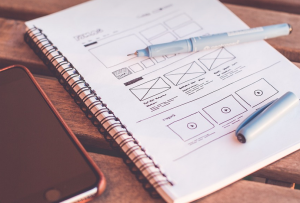
Understanding the Importance of Legends
Legends are those tiny but mighty details that breathe life into your engineering drawings. They’re like translators, clarifying complex symbols, abbreviations, and scales for everyone from engineers to clients who might not have a deep understanding of intricate machinery. Imagine trying to figure out how a lever mechanism works just by looking at a bunch of squiggly lines – you wouldn’t get very far!
Legends in engineering drawings play a crucial role in ensuring clear, consistent communication across projects and teams. They are the cornerstone of efficient understanding, preventing misinterpretations and unnecessary rework. A well-crafted legend can even make your drawings more visually appealing and user-friendly.
The Building Blocks of an Effective Legend
Having a legend that flawlessly guides viewers through your drawing is something you should strive for. But where do you start building those essential components? Let’s dive into some key elements:
**1. Clear & Concise Symbolation:** Your legends must clearly and accurately represent every symbol used in the drawings. Don’t rely on generic shapes; ensure each symbol is unique, recognizable, and consistent throughout your project. A standardized system with clear definitions for common symbols will save everyone a lot of time (and potential headaches) later on!
**2. Precise Terminology:** Avoid using jargon or abbreviations that might not be universally understood. If you’re designing something complex, consider using a glossary or a dedicated section to explain any technical terms or acronyms used in your legend. This ensures everyone on the team is working on the same page and understanding the drawings correctly.
**3. Scaled & Accurate Details:** Legends are not meant to be just descriptive; they need to be informative enough for accurate measurements. Ensure that all scale, dimensions, and annotations are clearly marked in your legend. For instance, if you’re drawing a machine with many moving parts, use clear labels indicating the direction of movement. This helps engineers understand how the components interact with each other and prevents any misunderstandings.
Best Practices for Legend Design
A well-designed legend is more than just a list of symbols; it’s an integral part of your drawing that should be aesthetically pleasing and easy to navigate. Here are some best practice tips
**1. Consistency & Visual Harmony:** Use a consistent style for all your legends; choose a font, color scheme, and layout that complements the rest of your drawings. This ensures unity and makes it easier for your viewers to follow along.
**2. Comprehensive Legend Placement:** The legend’s location is crucial – keep it clear and accessible within the drawing without hindering the flow. If you need a reference point, consider placing the legend at the bottom or side of your diagram if your design allows for it. This ensures viewers have easy access to important details.
**3. Clear & Easy-to-Read Font:** Choose a font that is both legible and visually appealing; consider using bold, contrasting colors to highlight crucial information and ensure readability without distracting the viewer.
Beyond the Basics: Advanced Legend Techniques
Legends can be much more than just basic definitions and symbols. There are several advanced techniques you can employ to enhance clarity and sophistication. Consider these options for a unique touch on your drawing legends!
**1. Color-Coding:** Use color coding in your legends to highlight key elements, such as critical parts or specific functionalities. This approach is especially effective when working with complex schematics, allowing you to quickly identify important features and connections.
**2. Cross-Referencing: ** Provide a “cross-reference” section in your legend that links relevant symbols or abbreviations to their actual descriptions within the drawing itself. This eliminates any ambiguity or confusion about what each symbol represents.
A Legend for Every Engineering Drawing
Legends are the backbone of clear, effective engineering drawings, allowing everyone on a project to stay informed and communicate seamlessly. With careful planning and attention to detail, your legend can become an indispensable tool that helps you build robust, efficient, and reliable designs. Remember:
- A well-crafted legend saves time and frustration down the line.
- It ensures everyone on the project team understands the drawing’s intent and purpose.
- It creates a strong foundation for effective communication and collaboration.



